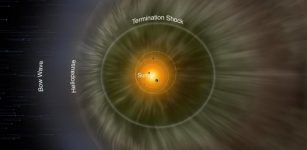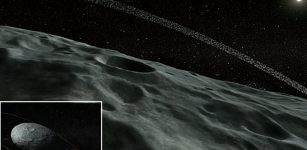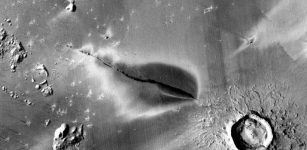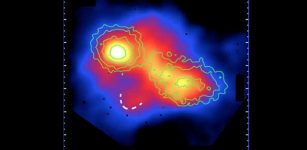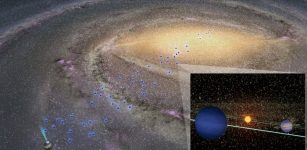Weird Martian Moons Phobos And Deimos: Did They Form After Impact On Mars?
MessageToEagle.com – New study that re-evaluate data from NASA’s Mars Global Surveyor spacecraft during a close flyby of Phobos, two decades ago, suggests that the moons of Mars formed after a large impact on the planet threw a lot of rock into orbit.
The weird shapes and colors of the tiny Martian moons Phobos and Deimos have inspired a long-standing debate about their origins. The debate over the origin of Mars’ moons has split scientists for decades, since the early days of planetary science. In visible light, Phobos and Deimos look much darker than Mars, lending weight to the adoption hypothesis.
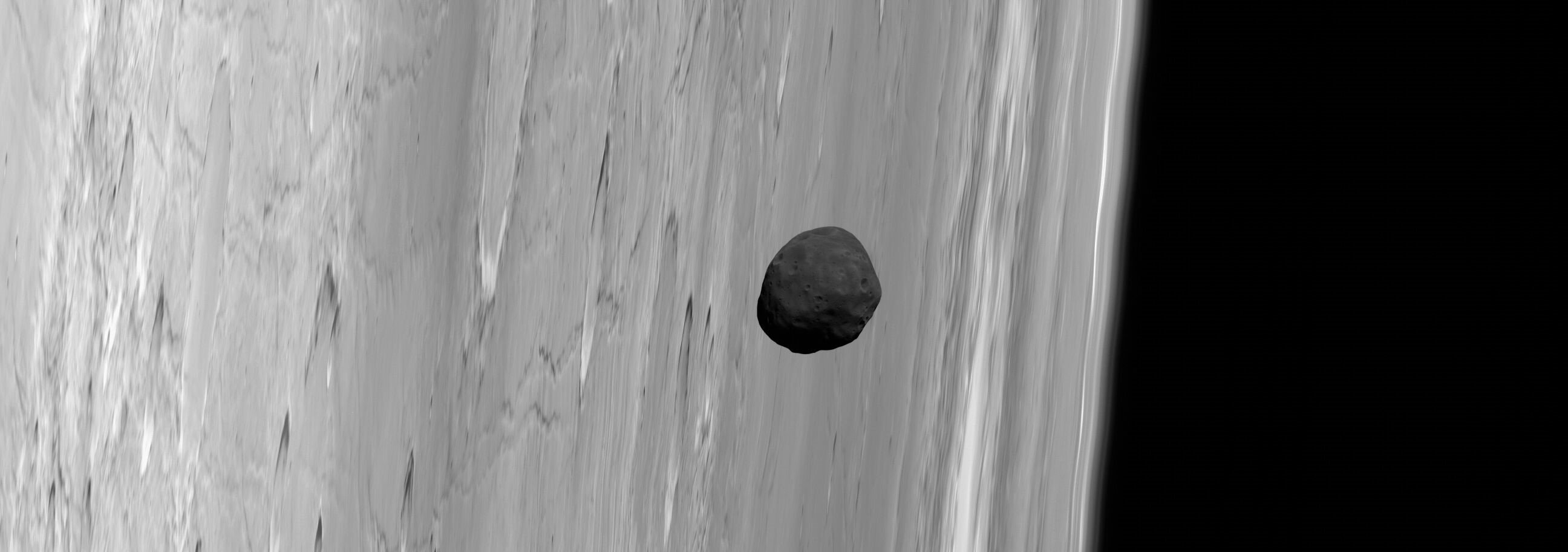
The dark faces of the moons resemble the primitive asteroids of the outer solar system, suggesting the moons might be asteroids caught long ago in Mars’ gravitational pull.
But the shapes and angles of the moons’ orbits do not fit this capture scenario.
“If you talk to the people who are really good at orbital dynamics and figuring out why certain bodies orbit the way they do, they say that, given the inclination and the details of Phobos’ orbit, it’s almost impossible that it was captured. So you have the spectroscopists saying one thing and the dynamicists saying something else,” said Tim Glotch, a geoscientist at Stony Brook University in New York and the lead author of the new study.
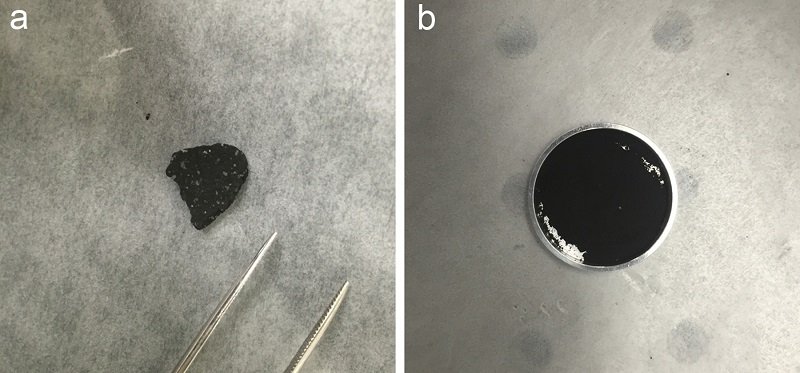
Glotch and his students compared the mid-infrared spectra of Phobos glimpsed by the Mars Global Explorer to samples of a meteorite that fell to Earth near Tagish Lake, British Columbia, which some scientists have suggested is a fragment of a D-class asteroid, and other rock types. In the lab, they subjected their samples to Phobos-like conditions of cold vacuum, heating them from above and below to simulate the extreme changes in temperature from the sunny to the shady sides of airless objects in space.
“We found, at these wavelength ranges, the Tagish Lake meteorite doesn’t look anything like Phobos, and in fact what matches Phobos most closely, or at least one of the features in the spectrum, is ground-up basalt, which is a common volcanic rock, and it’s what most of the Martian crust is made out of,” Glotch said. “That leads us to believe that perhaps Phobos might be a remnant of an impact that occurred early on in Martian history.”
Marc Fries, a planetary scientists and curator of cosmic dust at NASA’s Johnson Space Center, who was not involved in the new study, said the inability to explain the genesis of two moons around a neighboring planet is a glaring shortcoming in scientists’ understanding of moon formation. Clearing it up will help with interpretations of how other moons and planets formed in our solar system and beyond. The new study does not clinch the mystery, but it is a step in the right direction, he said.
“The issue of the origins of Phobos and Deimos is a fun sort of mystery, because we have two competing hypotheses that cannot both be true,” Fries said. “I would not consider this to be a final solution to the mystery of the moons’ origin, but it will help keep the discussion moving forward.”
MessageToEagle.com

